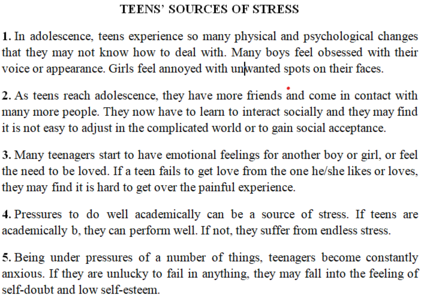Read the text. Match the headings with the paragraphs A-C.
- The artist Paragraph ____________
- The process Paragraph ____________
- The tradition Paragraph ____________
Many of children's toys are perfect craftwork. To he, Vietnamese folk art, is a typical example.
A
To he is made from dough into different little things or animals which Vietnamese children love to keep as toys. Interesting shapes can be created to the wish of the children. It could be an animal like a chicken, a monkey or some fruits like a hand of bananas. The dough can be made from flour taken from ground rice or sticky rice, but the amount of sticky rice should be restricted to just 10 percent of the dough. Besides making nice dough, the artist prepares natural colours, which are usually made from leaves, vegetables or fruits. Sometimes paint is used, but traditionally natural items are preferred because they will make safe edible toys. The artist may creatively use leaves or small twigs to make further decorations. [1]
B
To he can be made by anyone who is creative and skillful enough, so parents can become favourite to he artists of their children. However, great artists of to he can be found in many Vietnamese villages. They can make extraordinary artworks with beautiful shapes, harmonious combination of colours, and lifelike features. The artists usually travel through villages or come to local fairs and festivals selling toys to children and their artworks play an important role in folk decorations. [2]
C
Nobody knows exactly when to he came into being, but it is believed to come from the north of Viet Nam. Xuan La village in Ha Noi is famous for this traditional art. Devoted artists have brought this beautiful art to everywhere in Viet Nam. Outside a schoolgate or on the pavement of a crowded street, a to he artist can be found passionately creating little colourful toys for some young children. [3] To he remains an interesting feature of Vietnamese culture.



- The artist
(Nghệ nhân)
Thông tin: “To he can be made by anyone who is creative and skillful enough, so parents can become favourite to he artists of their children.”
(Bất cứ ai đủ sáng tạo và khéo léo đều có thể làm được, vì vậy cha mẹ có thể trở thành nghệ nhân tò he của con cái họ.)
=> Paragraph B
- The process
(Quy trình)
Thông tin: “The dough can be made from flour taken from ground rice or sticky rice, but the amount of sticky rice should be restricted to just 10 percent of the dough. Besides making nice dough, the artist prepares natural colours, which are usually made from leaves, vegetables or fruits.”
(Bột có thể được làm từ bột lấy từ gạo xay hoặc gạo nếp, nhưng lượng gạo nếp chỉ nên giới hạn ở mức 10% của bột. Bên cạnh việc nhào bột đẹp, nghệ nhân còn pha màu tự nhiên, thường được làm từ lá, rau hoặc trái cây.)
=> Paragraph A
- The tradition
(Truyền thống)
Thông tin: “Xuan La village in Ha Noi is famous for this traditional art. Devoted artists have brought this beautiful art to everywhere in Viet Nam.”
(Làng Xuân La ở Hà Nội nổi tiếng với nghệ thuật truyền thống này. Những nghệ nhân tận tụy đã mang nghệ thuật tuyệt đẹp này đến mọi nơi trên đất nước Việt Nam.)
=> Paragraph C